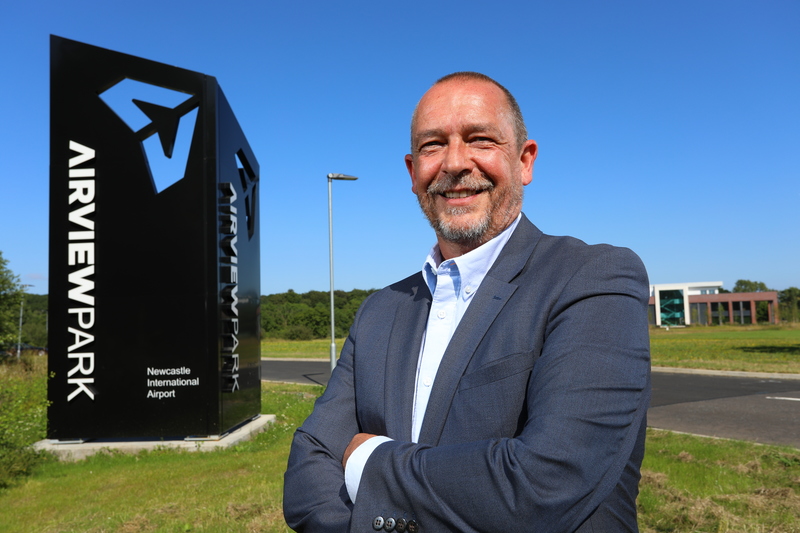Dysart
North East must capitalise on the opportunity of devolution
Mike Clark, development director, Dysart Developments
Anybody would be forgiven for having started 2023 with an uncharacteristically sombre outlook. Even after our heads have started to clear, and we start to refocus on the year ahead, the economic and social storm clouds, from which we may have enjoyed respite over the festive break, have reformed in the sky.
Despite the emergence of some green shoots of recovery, it’s true that some of the macroeconomic indicators don’t paint a particularly positive picture: inflation remains high; interest rates are still on an upward trend; manufacturing is down; house prices are falling; the national economy is stagnant. Even the prime minister gave a fairly downbeat new year message, warning that the country’s problems will not be going away any time soon.
But the outlook isn’t universally bad. Here in the North East, with a new devolution deal pending, uniting much of the region, there is plenty to be hopeful about. We must take care to ensure that we don’t talk ourselves into being dragged along by the bandwagon of doom when there is a world of opportunity right at our fingertips, if we want to grasp it.
This area is a bubbling cauldron of development opportunity; the devolution deal has the potential to unlock that, but we all must unite behind it to ensure it gets the traction it needs to fly. The North East Mayoral Combined Authority, for starters, will receive £1.4bn to plan with long term certainty, the region’s economic strategy over 30 years - and that’s before you factor in the potential to leverage in funds through borrowing, or the special powers which could be deployed through the use of tools such as mayoral development corporation.
In addition to investment in adult education and transport infrastructure, the new mayor will be given oversight of a pot of funding to deliver regenerative development opportunities, accelerating affordable home development on brownfield sites and ‘green economic growth’.
Historically, as those of us indigenous to region know, the North East was a global industrial hub: coal, steel, railways and shipping to name but a few of the dominant industries of the past two centuries. While those industries are no longer prominent, or in some cases active at all, there is, nonetheless pent up opportunity; there is life after industrial decline. But the problems faced in the North East are the same now as they were ten or twenty years ago: the local housing offer; the brain drain; attracting investment; transport infrastructure.
Addressing these issues is possible through town-based redevelopment. In Consett, where the steelworks closed in 1980, after almost 150 years at the beating heart of the local economy, Dysart has redeveloped almost 100 hectares of former Consett the steel works land. Its regeneration has created 1,500 jobs, and enabled investment of over £250m into the local economy. Much of this investment has gone into housing. Growing the population of the town has encouraged commercial activity and helped sustain and grow services in the town. The imminent replacement of Shotley Bridge Hospital with a £45m new Hospital enabled by Dysart on the steel works site being one of many examples.
Many of the region’s large towns and cities are having, or have seen, significant urban renewal since, some are still ongoing, such as the works currently taking place on Tyneside around, for example the Stephenson Quarter and just across the river at the new Gateshead Quayside arena complex. But cities, despite premium land costs and the complexity of metropolitan construction works, are relatively low-hanging fruit for development; they represent consolidation of investment in areas, very often, which already have significant employment opportunities and economic activity.
The harder to reach areas are the smaller towns, like Consett, often formerly home to local industries or, in large swathes of County Durham, mines. Many are now home to failing town centres; disintegrating housing stock and with residents suffering shortages of decent employment opportunities and high levels of deprivation. The North East devolution arrangement must look to areas like these. There is much to be gained from investing in sustainable community development, where people can work constructively, live comfortably and access leisure in a way they choose.
Such development is both desirable, possible and there is substantial appetite for it in our region.
The new combined authority area will be vast, stretching from Berwick in the north to Sedgefield in the south and Haltwhistle in the west; it’s a daunting geography. Nonetheless, setting coherent transport infrastructure strategy is another essential element of its role. Inter and extra-regional connectivity is essential in creating and maintaining economic growth; joining up our transport hubs with our economic and residential ones.
Identifying priorities will undoubtedly be the biggest challenge of the new authority but it mustn’t fall into just doing what’s easy, pouring investment into already succeeding urban areas, in the hope that their affluence spreads outwards. Rather it must look to the pent-up opportunities, where economic sustainability is waiting in the wings of otherwise left-behind communities. And surely that is the true meaning of the government’s favourite buzz phrase, ‘levelling-up’.
So, while some of us may have started the year in the doldrums, there is cause for optimism this year as we approach the dawning of a new age of cooperation and possibility in the North East. Deployed strategically, the regeneration agenda could deliver the reforging of some of our forgotten communities, the relics of industrial decline, creating opportunities for sustainable growth.
back to Dysart
